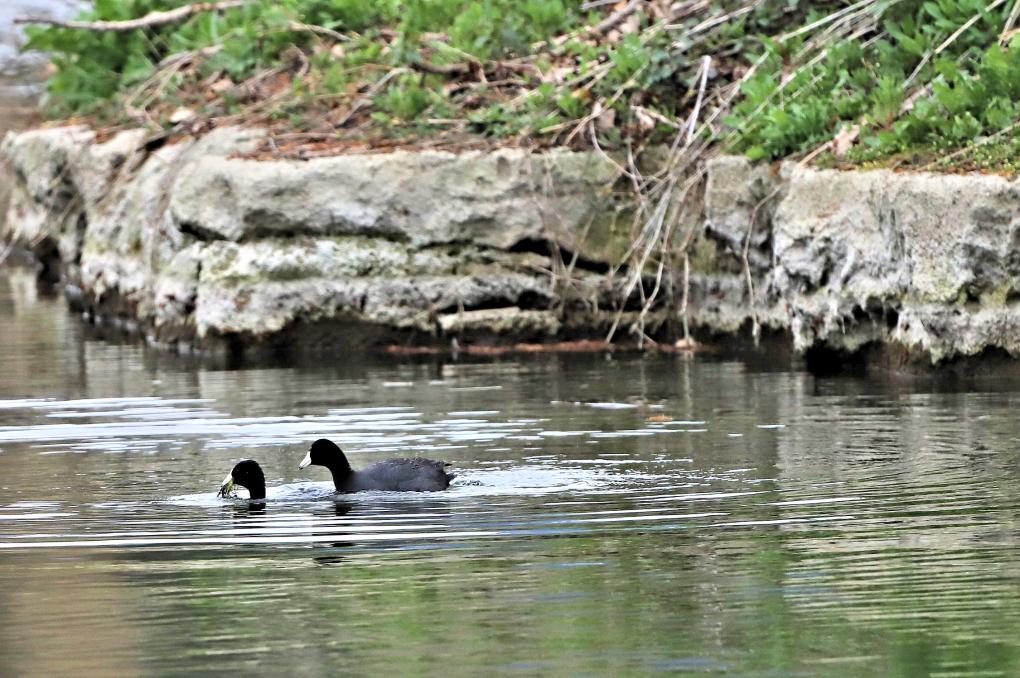Sandra
Forum Replies Created
-
SandraParticipantActivity 4: I started taking more bird pics, while walking my dog. We are fortunate to have a large number of marshes, lakes and mountains. My dog is young and impatient. I decided today that i need to visit some hotspots on my own. It is so much fun to sit quietly in the woods or marshes and watch; rather than walking around. I am still working on finding birds by song, and i want to further my education. I have shared a lot of pictures with friends, and i am also discussing with them what we can do for birds. What's the next course? Cheers
 in reply to: Activities: Helping Birds in Your World #701382
in reply to: Activities: Helping Birds in Your World #701382 -
SandraParticipantActivity 2: I have always been environmentally conscious; recycling, reducing waste, natural cleaners, vegetarian, spreading the word. I am working on shopping more locally, to reduce environmental impacts. I contribute to nature groups. My new birdbath hasn't attracted any new friends; the new bird feeder is ready to go up. It's fun sneaking into the bushes to get a peak at the birds. It's a new game; who is that birdie? I am connecting with birders out and about. Children and adults ask what I am taking pictures of. Fun!
 in reply to: Activities: Helping Birds in Your World #701283
in reply to: Activities: Helping Birds in Your World #701283 -
SandraParticipantActivity 1: It is no surprise to me about the decline of bird populations. I knew about the increase in Bald Eagle populations. While a symbol for the U.S., Canada has alway had more Bald Eagles (to my knowledge). My love and interest of birds goes back at least 3 generations. My life slowing down has meant more time outdoors, where I have always felt peaceful. I restarted my interest in photography a little while back, and this has added to my awareness of birds. Learning to take pictures in flight is fun; the birds, not me. Lol. In British Columbia already this spring I have seen many migratory, returning, breeding and hybrid varieties that I knew existed. I am working on recognition of bird song and sound; hard work! I had always wondered about the different feeding habits and variety of birds. To my delight I have discovered I have many friends who are enthusiasts. During this time indoors for friends around the world, many friends have let me know how much my bird pictures cheer them up. Each time I post a picture I look up information on the bird in Merlin. I remember more birds when i was young. I was sad to see so many migrate last winter, and sadder still to see them in decline. This Mallard is looking at us sideways; wondering where things have gone wrong with his home.
 in reply to: Activities: Helping Birds in Your World #701281
in reply to: Activities: Helping Birds in Your World #701281 -
SandraParticipantactivity 2: Roger Road. Wetlands, mountains on both sides, parks, river, a large number of species, feeders of many varieties. Likely a large migration area due to the abundance of food. The many duck varieties would have leaves, reeds, small fish and crustaceans. Many tree feeders like the sparrows. Flowers for the hummingbirds. Park and open areas for hawks to hunt. Some flycatchers. Mt. Lemmon: Half the number of species as Roger Road. A great deal more larger birds; hawks hunting, woodpeckers who have a varied appetite for insects, nuts, sap and pine seeds. Being a mountain area there are likely a lot of evergreens; a perfect place for hawks and Ravens to sit and watch for rodents. A number of tree foragers like the sparrows. Colder temperatures and limited food sources, compared to Roger Road. Most of the species there likely are permanent/seasonal residents.

 in reply to: Activities: Exploring Bird Habitats #700636
in reply to: Activities: Exploring Bird Habitats #700636 -
SandraParticipantActivity 1: Surprising to me, by our large lake, there is not a lot of diversity. A lot of Canada Geese, some Mallards and other migrating ducks, Sandpipers, and a few birds in the large trees close by (American Goldfinch, European Starlings, ). In the marshes close by are Great Blue and Grey Herons, Mallards, Ruddy Ducks, Gadwall, American Coots, hybrid ducks, American Wigeon, sparrows, Osprey, and on and on. The marshes have so many food sources compared to the lake. I have seen the herons at the lakeshore, but not often.

 in reply to: Activities: Exploring Bird Habitats #700623
in reply to: Activities: Exploring Bird Habitats #700623 -
SandraParticipantActivity 3: In central British Columbia we have Violet-green Sparrows breeding! Several of them flew on my deck yesterday morning. They glided over the railing of up to the rafters, then flew away. They have a very quick chirpy sound. House sparrows are numerous in a large tree close by, as are American Goldfinches. European Starlings have a funny song. Several Mallards and Canada Geese flying over towards the numerous ponds and marshes close by. I don't like the sound crows make, but they are interesting and smart. There was one sound I could not make out. Going through sounds on Merlin I believe it is the Yellow-rumped Warbler. I am still working on locating through sound; a challenging task, considering the abundance of species here in the spring.
 in reply to: Activities: Noticing Behaviors #698682
in reply to: Activities: Noticing Behaviors #698682 -
SandraParticipantActivity 2: I watched the Ontario cam for a while, but only Sparrows. Surprising to me they were eating from the feeders facing down, like the Nuthatch. Then were feeding from the tray. The 5 of them were quite civilized. On the Cornell cam were several blackbirds eating from the feeders and the tray, with a lot of exuberance and fighting. As I expected, the woodpecker was hanging on the side of the feeders, pecking slowly. The Mourning Dove was pecking slowly on the tray. I wonder how humans would eat if social pressure to conform was not there? lolin reply to: Activities: Noticing Behaviors #698675
-
SandraParticipantActivity 1: at one of my favorite marshes, there were few birds, but a lot of activity. A Red-winged Blackbird and crow squawking and flying at one another. The crow was low in the tree, which i do not normally see, and was intent on annoying the Blackbird. Male Mallards chasing one another. Fighting over the female close by I think. The Osprey were busy the past few weeks nest building, but I only saw the female today sitting low in the nest. Keeping the eggs warm. I found an empty Robins egg on the ground, but did not see any Robins. Red-winged blackbirds in several different trees were sending out warning signals when I got close. I am used to their annoyed calls, but these calls were more protective sounding. Many House Sparrows hopping from one bush to another, angry at each other. I have seen them be territorial before; not like the Red-winged Blackbird is though.in reply to: Activities: Noticing Behaviors #698651
-
SandraParticipantActivity 4: In Central British Columbia we have a few months of cold weather, so the number of species, and number of those staying the winter decrease considerably. I get really tired of taking pictures of Canadian Geese in the winter. Fortunately spring comes early. Winter: Canadian Geese, Song and House Sparrow, Starlings, my favorite Black-capped Chickadee (I am working on locating them by song), American Crow (some really large ones). There are a few others, but not seen in the city normally. We have a few Alaskan swans that winter here. So nice to see. Summer: Oh boy! So many. How do they do it? American Robins and Red-winged Blackbirds are the first to show up (Blackbirds mainly around our marshes). Our early spring brings so many in April and May: Mallards, Northern Flicker, California Quail (they are so cute, but my mom complains they dig up the garden), American Goldfinch, House finch (this is the largest finch i have seen), just saw a group of Violet-green Swallows for the first time, I love the soft sound of the Mourning Dove, American Coots, the Osprey are a big deal nesting in our city right now. There are so many; and i have seen so many new to me already this spring.


 in reply to: Activities: Different Seasons, Different Birds #697956
in reply to: Activities: Different Seasons, Different Birds #697956 -
SandraParticipant

 Activity 3: It is incredible the difference in colors in different seasons. It makes sense that many birds are less colorful in the winter for camouflage. We do not have either species in our area in the winter. It is interesting that the males are more colorful than females in summer. The color and markings are so vibrant, and I guess pleasing to the females. Is it also that birds in colder winter climates have extra feathers to keep warm? It would make sense. I am going to look that up. In the human race it is the females that decorate to attract males. Funny. in reply to: Activities: Different Seasons, Different Birds #697953
Activity 3: It is incredible the difference in colors in different seasons. It makes sense that many birds are less colorful in the winter for camouflage. We do not have either species in our area in the winter. It is interesting that the males are more colorful than females in summer. The color and markings are so vibrant, and I guess pleasing to the females. Is it also that birds in colder winter climates have extra feathers to keep warm? It would make sense. I am going to look that up. In the human race it is the females that decorate to attract males. Funny. in reply to: Activities: Different Seasons, Different Birds #697953 -
SandraParticipantActivity 2: Canada Geese: Many stay in central British Columbia year round. Sparrows and Starlings: some House Sparrows stay over the winter, as do many Starlings. Winter is not too long where we are. I have seen so many varieties this spring! Spring comes early here, and many species have been back for more than a month. For us the first to arrive are Robins and Red-winged Blackbirds. I feel fortunate to have seen many rare ones already this year; Cinnamon Duck, Wood Duck, Blue-headed Mallard, Ruddy Ducks, and more. The breeding Osprey are a big event here.in reply to: Activities: Different Seasons, Different Birds #697649
-
SandraParticipantActivity 2: Sounds. California Quail, American Robins for sure, Song Sparrow, noisy Red-winged Blackbirds, Canada Geese were quiet under a large tree (They are most noisy when about to take off. They are most plentiful on our large lake). California Quail makes a sound like they are saying boo. lol. Was hard to see the small birds in the large, overgrown marsh area today, but I was sure I saw House Finches, and listening to the sounds on my app it was definitely them. I have to find Chickadees! So cute! But listening to their song on the app, I did not hear one today.

 in reply to: Activities: Local Bird Exploration #696568
in reply to: Activities: Local Bird Exploration #696568 -
SandraParticipant

 Activity 1: I went to one of our many marsh areas. There were the usual Mallards, Canada Geese, red-winged Blackbirds, Yellow-rumped Warblers which I am seeing for the first time (this is their breeding area), sparrows (I think they were Song Sparrows but they were moving in and around thick bush), American Robin (I have seen these my whole life and I did not know the full name. We have always said it is spring when we see the Robins). I love to watch the California quail; so cute. Didn't see any little ones yet. I heard what I think was Chickadees, but they were very high up in the trees. There were some big nests up there too, but I did not see any birds around them. Owls do inhabit this area. in reply to: Activities: Local Bird Exploration #696563
Activity 1: I went to one of our many marsh areas. There were the usual Mallards, Canada Geese, red-winged Blackbirds, Yellow-rumped Warblers which I am seeing for the first time (this is their breeding area), sparrows (I think they were Song Sparrows but they were moving in and around thick bush), American Robin (I have seen these my whole life and I did not know the full name. We have always said it is spring when we see the Robins). I love to watch the California quail; so cute. Didn't see any little ones yet. I heard what I think was Chickadees, but they were very high up in the trees. There were some big nests up there too, but I did not see any birds around them. Owls do inhabit this area. in reply to: Activities: Local Bird Exploration #696563 -
SandraParticipantI just finished watching 10 Fun Facts about Chickadees| Smart, Tough, & Friendly. I am amazed by their communication and smarts. How does something so small be so intelligent and complex?in reply to: Activities: Bird ID Practice #696052
-
SandraParticipantActivity 4: Favorite bird. I like small cuteness. I saw a Black-capped Chickadee for the first time a few weeks ago. Her brown, black and white colorings are not flamboyant, but soothing somehow. Why have I not seen one before? They are year-round inhabitants of British Columbia. Little is hard to spot. I think I was captured by her song. Their body shape is more symmetrical; with a larger head. I like that they feed on seeds, and not gross worms etc. As much as it would be lovely to have birds at home, I do not believe in animals of any kind in cages.
 in reply to: Activities: Bird ID Practice #696045
in reply to: Activities: Bird ID Practice #696045 -
SandraParticipantActivity 3: An American Coot was deep diving for plants. Not sure if she is going to share. The Northern Flicker, a member of the woodpecker family, was in woodpecker form making a monster hole in the tree, but feeds on the ground. How does that happen? I did not get a picture, and I found it disturbing, but a Bald Eagle flew overhead with what sounded like a live Starling in his grip. A few weeks ago I saw a Great Blue Heron grab what looked like a mouse in the grass. I had to look it up, as I did not know they would eat those. I am fascinated with birds, but being a vegetarian that grossed me out. lol

 in reply to: Activities: Bird ID Practice #696040
in reply to: Activities: Bird ID Practice #696040 -
SandraParticipantActivity 2: So many ducks! There is the female Mallard, the Gadwall, and then i saw a group of hybrids; all mainly brown. I did not know there were hybrids. I have discovered a great many more ducks just in the last month. And then there are those migrating through. Makes my head spin!in reply to: Activities: Bird ID Practice #695837
-
SandraParticipantWe have a lot of Northern Flickers . They are a member of the woodpeckers. They feed on the ground. That confused me too.
 in reply to: Activities: Exploring Birds #695817
in reply to: Activities: Exploring Birds #695817 -
SandraParticipantWe have a lot of finches in British Columbia. I was curious why they are called "house" finches. I found a story about finches from California in the 1940's that were caged and sold in the eastern U.S. Many got free and they started to populate many new areas.in reply to: Activities: Exploring Birds #695814
-
SandraParticipantWe have many red-winged Blackbirds. Noisy and fiesty. I had to look it up; they are in the Icteridae family.in reply to: Activities: Exploring Birds #695810
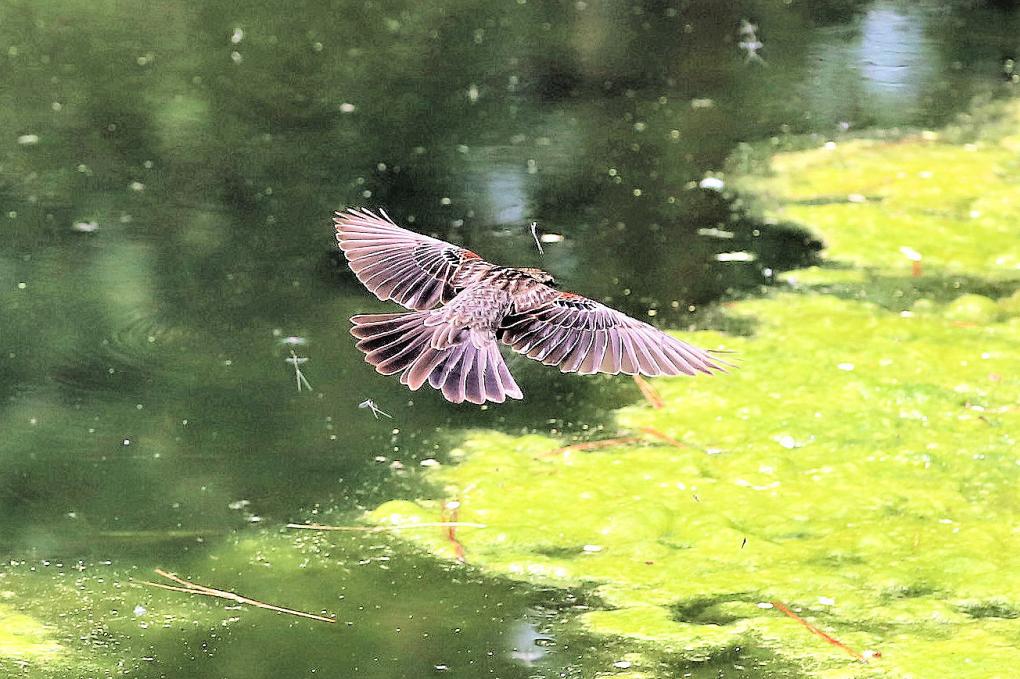

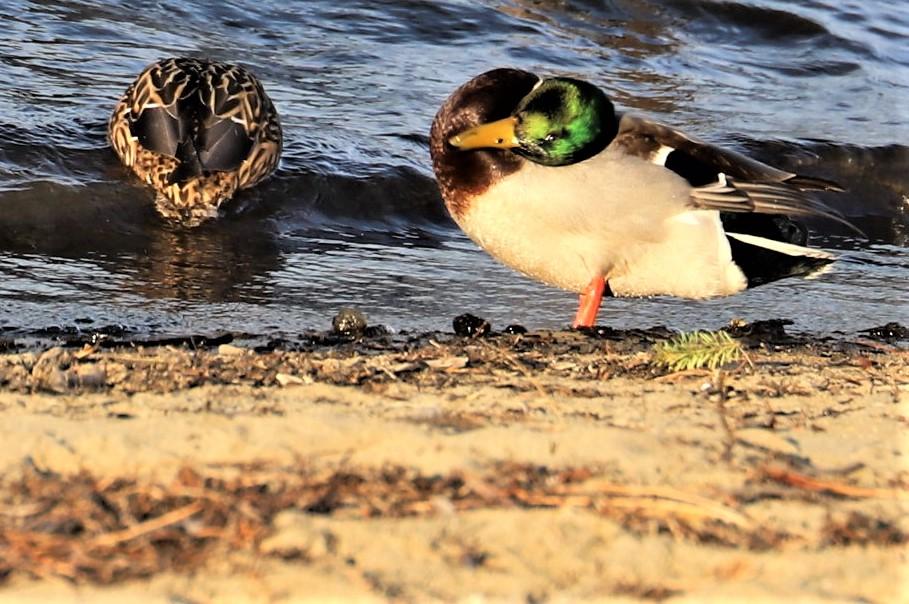
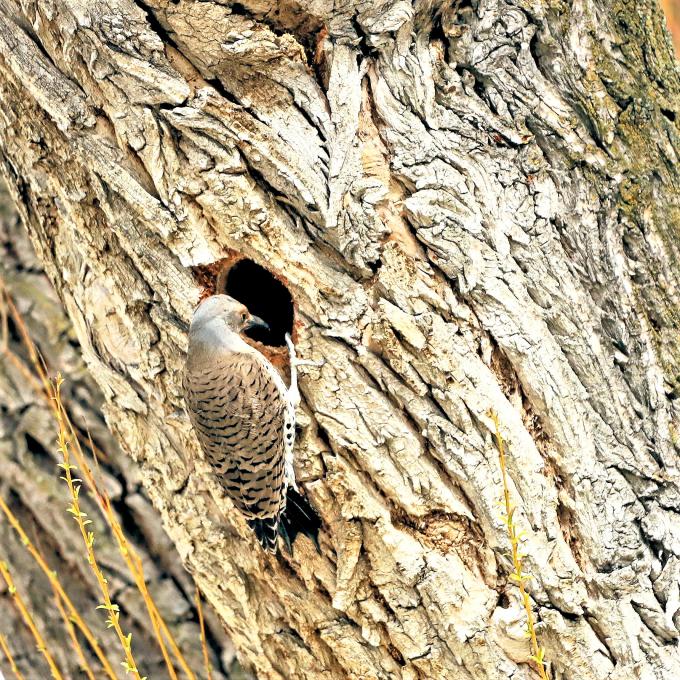




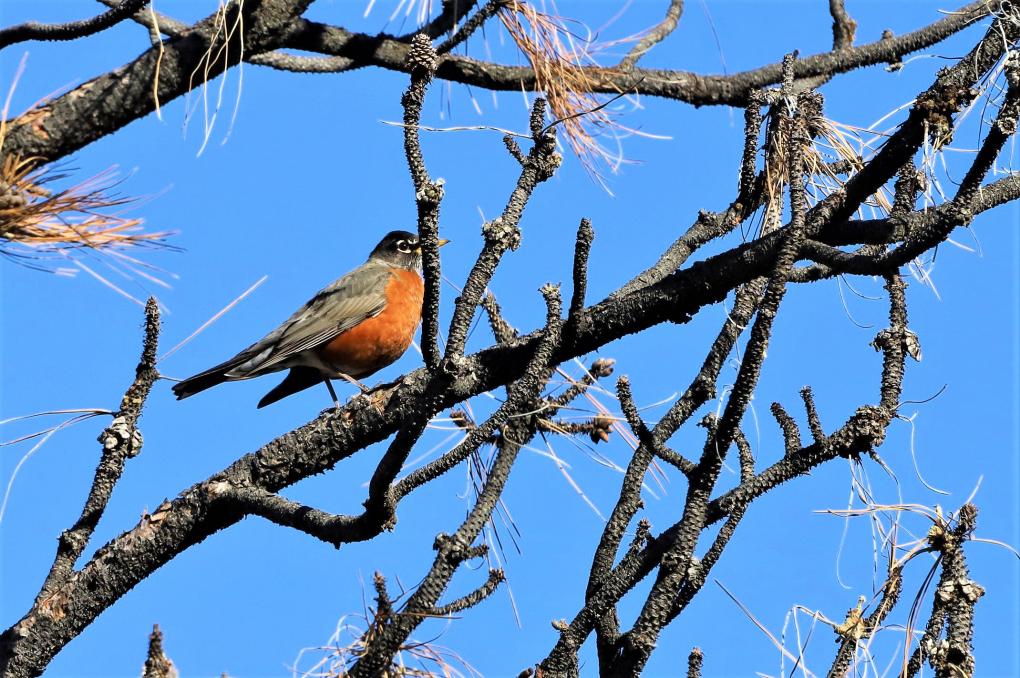
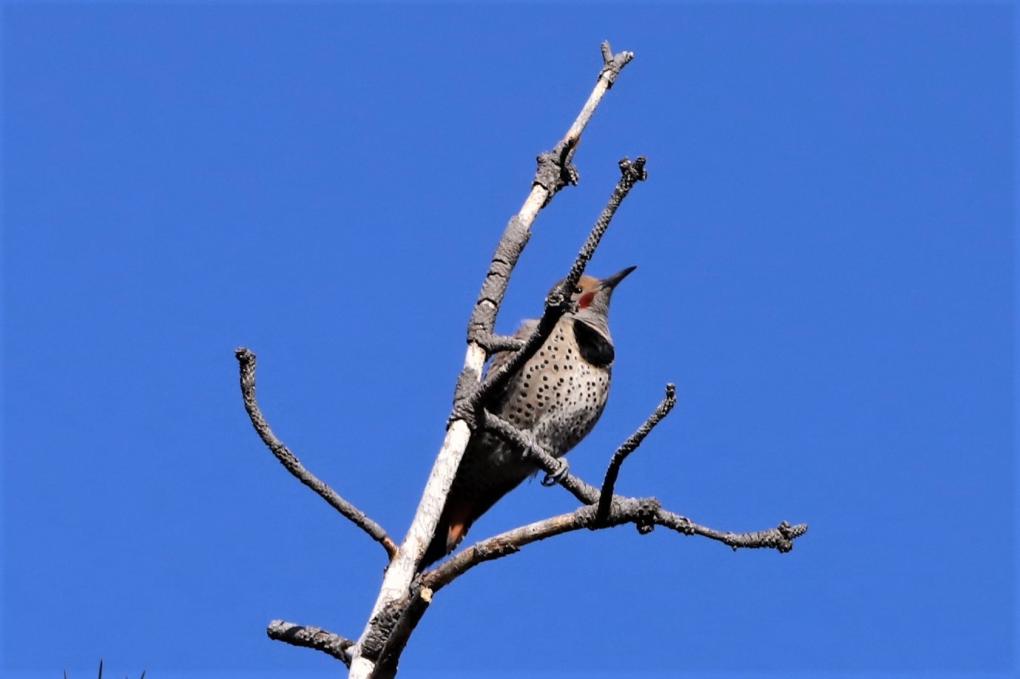
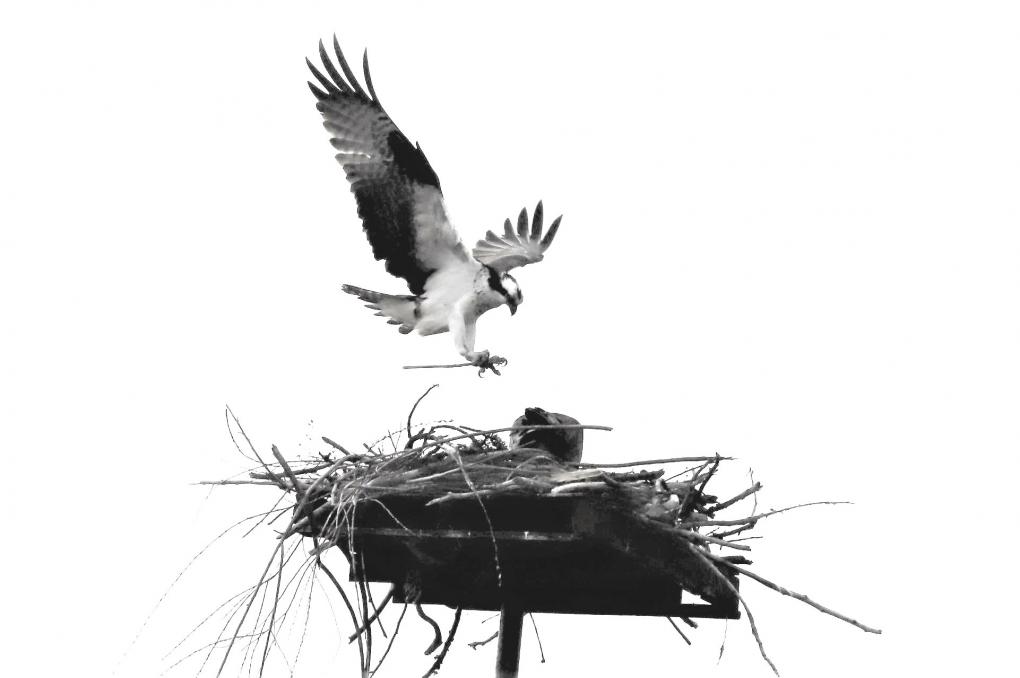

 Activity 3: It is incredible the difference in colors in different seasons. It makes sense that many birds are less colorful in the winter for camouflage. We do not have either species in our area in the winter. It is interesting that the males are more colorful than females in summer. The color and markings are so vibrant, and I guess pleasing to the females. Is it also that birds in colder winter climates have extra feathers to keep warm? It would make sense. I am going to look that up. In the human race it is the females that decorate to attract males. Funny.
Activity 3: It is incredible the difference in colors in different seasons. It makes sense that many birds are less colorful in the winter for camouflage. We do not have either species in our area in the winter. It is interesting that the males are more colorful than females in summer. The color and markings are so vibrant, and I guess pleasing to the females. Is it also that birds in colder winter climates have extra feathers to keep warm? It would make sense. I am going to look that up. In the human race it is the females that decorate to attract males. Funny. 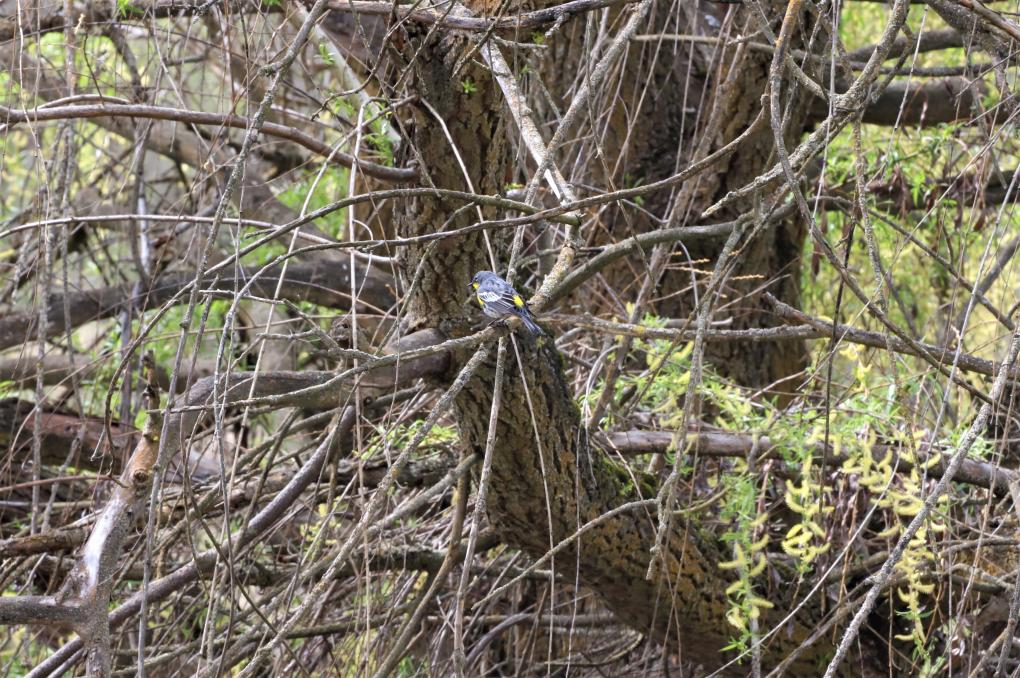
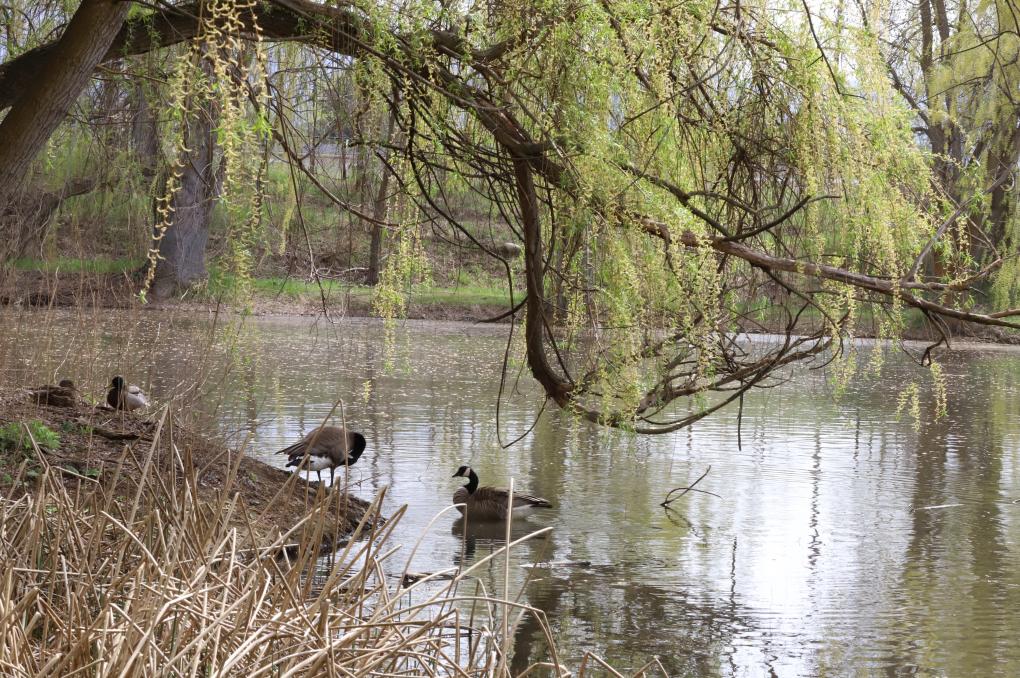
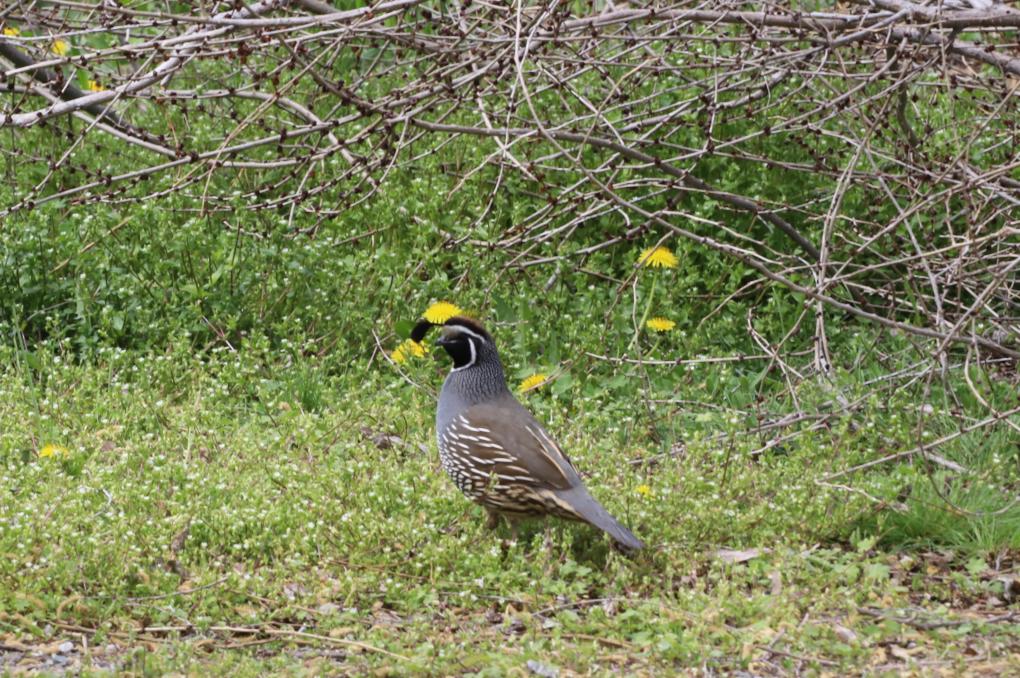
 Activity 1: I went to one of our many marsh areas. There were the usual Mallards, Canada Geese, red-winged Blackbirds, Yellow-rumped Warblers which I am seeing for the first time (this is their breeding area), sparrows (I think they were Song Sparrows but they were moving in and around thick bush), American Robin (I have seen these my whole life and I did not know the full name. We have always said it is spring when we see the Robins). I love to watch the California quail; so cute. Didn't see any little ones yet. I heard what I think was Chickadees, but they were very high up in the trees. There were some big nests up there too, but I did not see any birds around them. Owls do inhabit this area.
Activity 1: I went to one of our many marsh areas. There were the usual Mallards, Canada Geese, red-winged Blackbirds, Yellow-rumped Warblers which I am seeing for the first time (this is their breeding area), sparrows (I think they were Song Sparrows but they were moving in and around thick bush), American Robin (I have seen these my whole life and I did not know the full name. We have always said it is spring when we see the Robins). I love to watch the California quail; so cute. Didn't see any little ones yet. I heard what I think was Chickadees, but they were very high up in the trees. There were some big nests up there too, but I did not see any birds around them. Owls do inhabit this area. 

